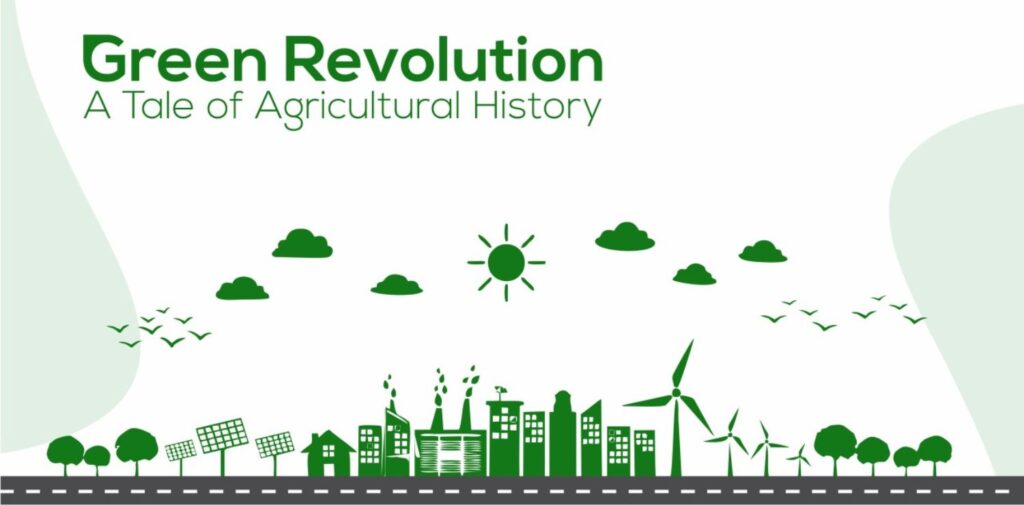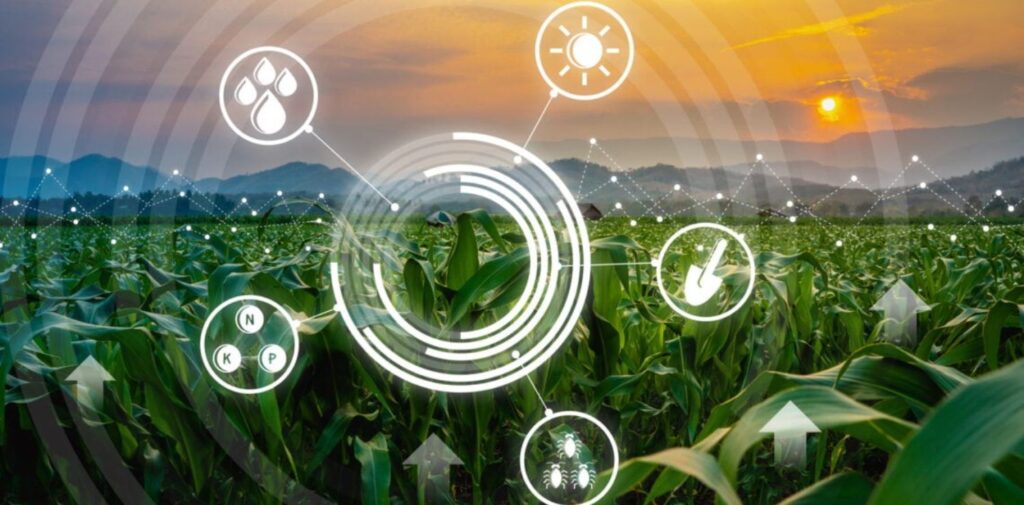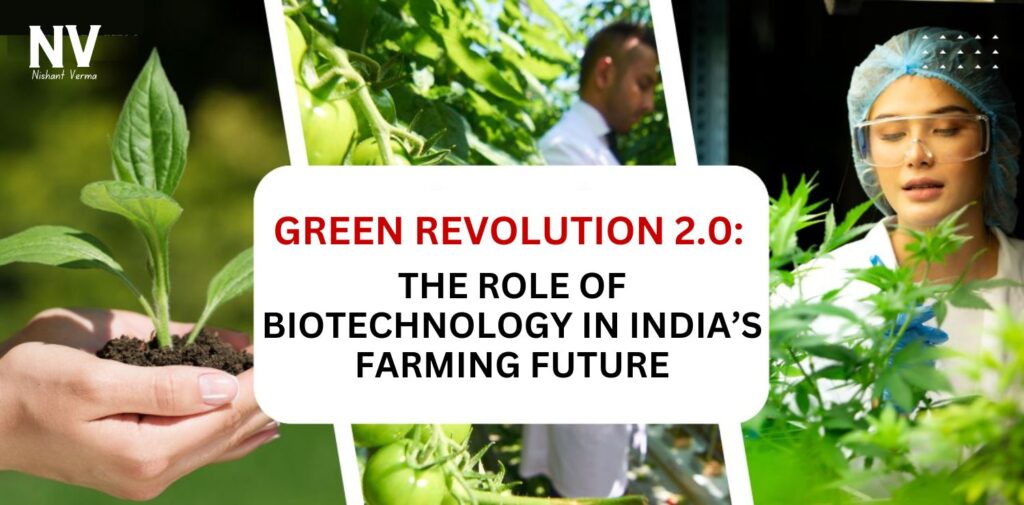India’s agriculture has always been the backbone of its economy. For decades, farming has provided livelihoods for millions of families and ensured food security for the nation. However, with increasing population growth, shrinking arable land, climate change, and the pressure to feed a rapidly growing population, India’s agricultural system is facing significant challenges. To address these challenges and sustain growth, the concept of Green Revolution 2.0 has come into play. This new phase of agricultural transformation heavily relies on biotechnology to improve crop yields, manage environmental challenges, and enhance the quality of food produced.
In this article, we will explore how biotechnology is shaping the future of India’s agriculture and what it means for the country’s farming communities, economy, and food security.
The Green Revolution 1.0: A Historical Overview
Before diving into Green Revolution 2.0, it is important to understand the first Green Revolution. The Green Revolution of the 1960s was a transformative period for Indian agriculture. It involved the introduction of high-yielding varieties (HYVs) of seeds, chemical fertilizers, and pesticides. These innovations led to a significant increase in food production, particularly in wheat and rice. The Green Revolution was a key factor in India’s shift from food scarcity to self-sufficiency, making the country one of the largest producers of rice and wheat globally.
While the Green Revolution helped India feed its growing population, it was not without drawbacks. The excessive use of chemical fertilizers and pesticides led to soil degradation, water pollution, and loss of biodiversity. Moreover, many small farmers did not benefit equally, as the new technology was expensive, and not everyone had the resources to invest in it.

Enter Green Revolution 2.0: What’s Different?
Green Revolution 2.0 is an evolution of the original Green Revolution. Instead of relying solely on traditional methods like high-yielding seeds and chemical fertilizers, Green Revolution 2.0 focuses on incorporating modern biotechnology. Biotechnology refers to the use of living organisms or their components to develop products and processes for specific purposes. In the context of agriculture, biotechnology encompasses techniques like genetic modification (GM), gene editing, and molecular breeding.
What makes Green Revolution 2.0 different is its emphasis on sustainability, environmental protection, and the use of cutting-edge science to address new-age challenges. Unlike the first Green Revolution, which often harmed the environment, Green Revolution 2.0 aims to improve the productivity of crops in a way that is ecologically safe, economically viable, and socially equitable.
The Role of Biotechnology in Enhancing Crop Productivity
One of the biggest challenges for Indian farmers is ensuring a high and consistent crop yield, especially in the face of unpredictable weather patterns, pests, and diseases. Biotechnology plays a significant role in addressing these challenges.
1. Pest-Resistant Crops: Biotechnology has enabled the development of crops that are resistant to pests and diseases. Genetically modified (GM) crops like Bt cotton, for example, have been engineered to produce a toxin that repels harmful insects. This reduces the need for chemical pesticides, which are expensive and harmful to the environment.
2. Drought-Tolerant Crops: India’s farmers are increasingly facing unpredictable weather patterns, with long periods of drought or heavy rains. Biotechnology has enabled the development of crops that can tolerate dry conditions, helping farmers maintain stable yields even in the face of water scarcity. Crops like drought-tolerant maize and rice varieties are already being tested and cultivated in some regions of India.
3. Improved Nutrient Uptake: Biotechnology is also helping crops absorb nutrients more efficiently from the soil. This can improve crop productivity even in nutrient-depleted soils, which are common in many parts of India. Enhanced nutrient uptake means that farmers can grow healthier crops, improving food security and reducing the need for expensive fertilizers.

Biotechnology and Environmental Sustainability
One of the most important goals of Green Revolution 2.0 is to make agriculture more environmentally sustainable. Traditional farming practices, particularly the use of chemical fertilizers and pesticides, have caused significant damage to the environment. Biotechnology has the potential to mitigate these negative effects.
1. Reduced Chemical Use: Through the development of pest-resistant and disease-resistant crops, biotechnology reduces the need for chemical pesticides. This not only lowers the cost of farming but also minimizes the environmental damage caused by harmful chemicals. By adopting biotechnological solutions, farmers can cut down on the use of toxic substances that pollute the soil, water, and air.
2. Soil Health: Biotechnology is working toward improving soil health by reducing the dependency on chemical fertilizers. Crops that can better absorb nutrients from the soil can thrive even with lower levels of fertilizers. Moreover, biotechnology helps in creating crops that contribute to soil fertility by enhancing organic matter.
3. Climate Change Adaptation: With climate change affecting weather patterns, Indian farmers need crops that can adapt to changing conditions. Biotechnology allows for the development of climate-resilient crops that can withstand extreme weather conditions, such as floods, droughts, and temperature extremes. By increasing the resilience of crops, biotechnology plays a critical role in making farming more sustainable in the long run.
Biotechnology’s Impact on Farmers
The role of biotechnology in agriculture is not just about technology—it’s also about improving the livelihoods of farmers, especially small and marginal ones who make up the majority of India’s farming community.
1. Increased Profitability: By using genetically modified crops that require fewer pesticides and are resistant to diseases, farmers can save money on input costs. Moreover, higher yields and better-quality crops translate into better profits, which can improve the economic status of farmers.
2. Small Farmers Benefit: Biotechnology innovations like drought-tolerant crops can help small farmers, who are more vulnerable to climate-related disasters. Such crops can give them more consistent harvests and reduce the financial strain caused by crop failures. Additionally, GM crops that resist pests help farmers avoid losses, especially in regions that suffer from pest outbreaks.
3. Enhanced Knowledge and Skills: The adoption of biotechnology encourages farmers to gain new skills and knowledge. Training programs and workshops focused on biotechnological advancements empower farmers with the information they need to make informed decisions about crop selection, pest control, and sustainable farming practices.

The Future of Biotechnology in Indian Farming
The future of India’s agriculture lies in its ability to innovate and adapt. Biotechnology holds the key to solving many of the challenges faced by Indian farmers. However, there are several factors that need to be addressed for biotechnology to reach its full potential.
1. Regulation and Safety: There needs to be a clear and effective regulatory framework to ensure the safety and efficacy of biotechnological products. Public acceptance and trust in GM crops will depend on transparent testing, labelling, and monitoring.
2. Awareness and Education: Farmers need to be educated about the benefits and risks of biotechnology. Government and private organizations must work together to provide training and resources to farmers, ensuring they understand how to use biotechnological innovations effectively.
3. Research and Investment: Continued investment in agricultural biotechnology research is essential. India must foster an environment where scientists, universities, and research institutions can develop new technologies and help translate them into real-world solutions for farmers.
Conclusion
Biotechnology has the potential to revolutionize Indian agriculture, ushering in the era of Green Revolution 2.0. By improving crop yields, reducing the environmental impact of farming, and helping farmers adapt to changing conditions, biotechnology offers solutions that are crucial for India’s agricultural future. However, for these innovations to have the maximum positive impact, it is essential to ensure proper regulation, education, and research investment. With the right approach, biotechnology can play a transformative role in securing a sustainable and prosperous future for India’s farmers and its food systems.




